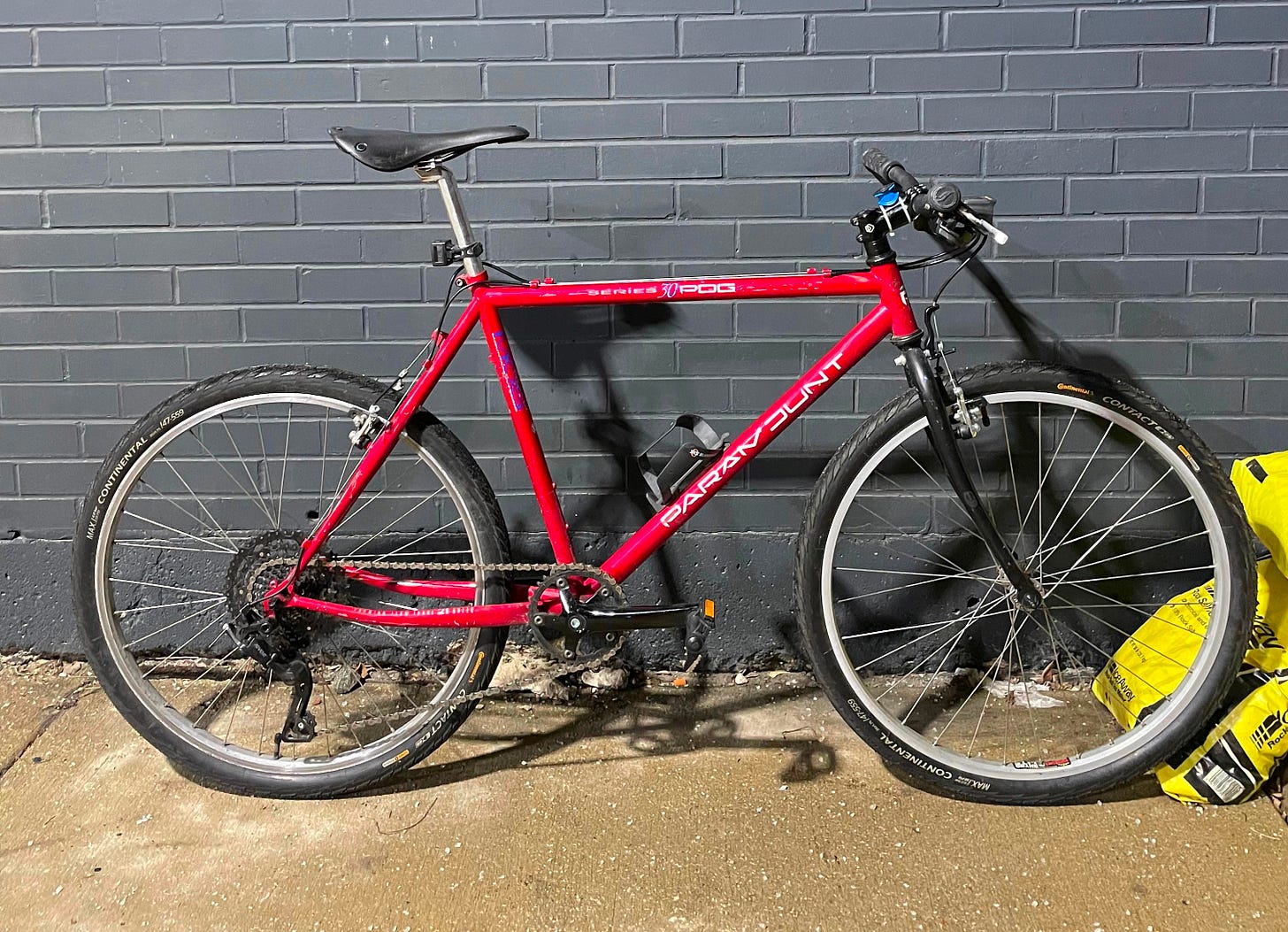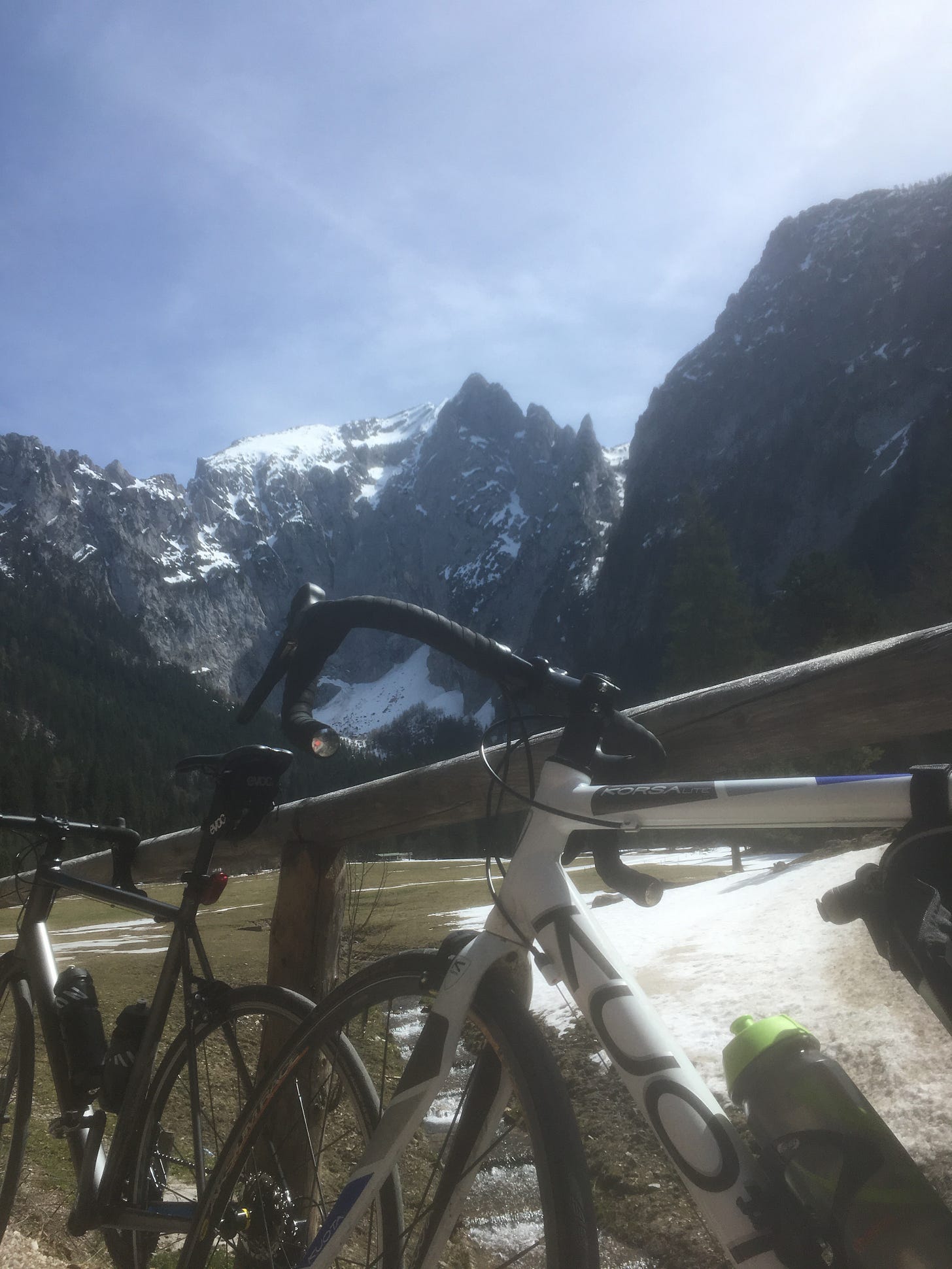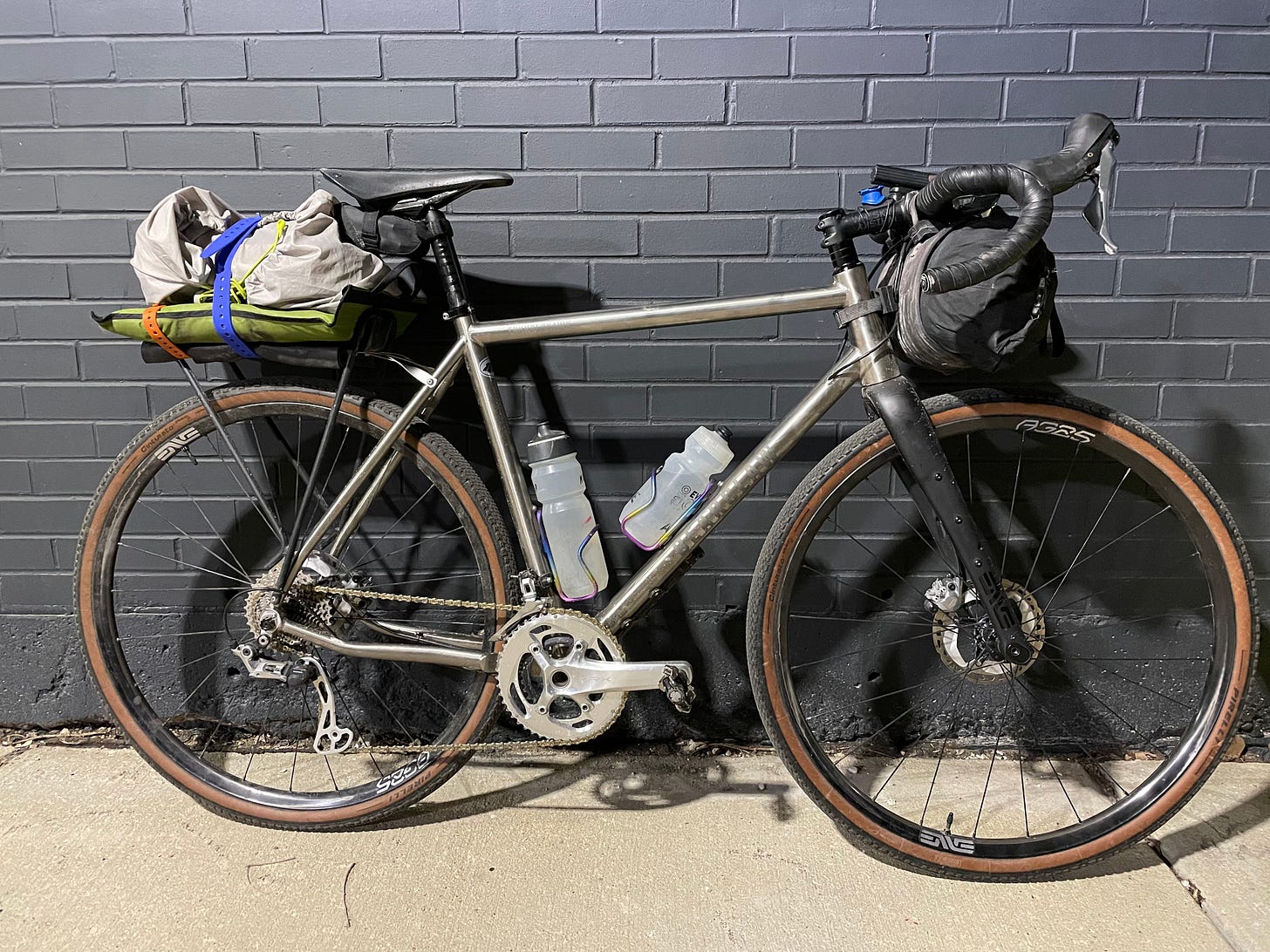Bike Commuting is the Gateway
There’s surprising joy – and rigor – that comes from transit by bike.
I started commuting by bike in 2015. At that point, I was the definition of a weekend warrior cyclist: 20-30 miles most Saturday mornings before traffic became prohibitive (I was living in Los Angeles at the time), plus a hodgepodge of beer league baseball, pickup soccer, and the occasional gym day.
My first commute was just three or four miles each way. Nothing, right?
I was so tired at the end of the first week.
Mind you, these were pre-COVID days, when daily presence in the office was the default reality for nearly everyone. But at first, more than three days a week left me dragging.
Some of this was certainly that a combination of the short distance plus traffic on a semi-major road was spurring me to ride quickly. As the well-researched athlete will know, going hard on a daily basis – even just two 15-minute spurts each day – will leave your autonomic nervous system begging for a rest. Of course, I didn’t have this knowledge at the time. The distance was just long enough that sweatiness was guaranteed no matter the pace, so I pretty immediately embraced the shower access I had at my office and rode hard to get there quickly.

Still, my body adapted. After a couple months doing this regularly, four or even five days of bike commuting per week didn’t feel like a burden. I changed jobs, extending my commute to a heady five miles each direction. But by that point, commuting by bike was just fun.
For one, riding past the backed-up Santa Monica traffic meant that, even with a shower, I was nearly as fast to and from the office as I was on the days I drove. For another, there’s no denying a smug, vainglorious pleasure in the surprise of your coworkers.
Most of all, though, bike commuting helped fully unlock the joy I’ve found on my bike.
Commuting Fitness: The Savior Baseline
When I moved to Austria, I was dropped into a cycling culture I – perhaps ignorantly – didn’t expect. I had in my head that, being on the edge of the Alps, mountain biking must be the default mode of two-wheeled adventure. Instead, the abundance of pristine, low-traffic roads (especially compared to the low number of bike-accessible mountain trails) meant that road cycling was the go-to activity from spring through fall for many people I met.
And I was not prepared.
To the (what I will call) “enthusiast” cyclists I quickly fell in with, that big weekend ride wasn’t 20 or 30 miles. It was 100k (60 miles), usually with about 1000 meters (3200ft) of elevation gain. Quite a jump for me. And while those first few rides were positively exhausting, the only reason I was able to complete them was the regular short-distance bike commuting I’d done and continued to do after moving.
Talk to any cycling coach, and one of the first things that they will ask you about is your riding frequency. Yes, volume and intensity are important, but some of the largest gains come simply in the change from riding two or three days a week to four, five, or even six days.
Finding time to work out that many days of the week can be really challenging, especially if you’ve got kids, a demanding career, or any other sort of common commitment. But if you’ve got to go to an office (or run an errand), doing it by bike starts getting your legs (and butt) comfortable with the idea of being on the bike any time. It doesn’t need to be hard riding, either. Start to get deeper into the training rabbit hole, and you’ll find that the majority of your riding should be relatively easy anyways.
This is what I mean when I say bike commuting is the gateway. It’s the loosely structured push to get yourself on a bike just a little more often. It’s a non-intrusive way to open up the possibility of going further by bike.
Taking Things to the Extreme
For the last few years, I’ve been doing more of what I would class as “training” rather than just “riding.” (If you missed it, I wrote a whole series about this.) That has made the short daily commute less important to my overall fitness because it’s been subsumed into a larger structure. I don’t need the commute to ensure I’m riding with enough frequency.
Still, commuting by bike plays a vital role in my training.
Gone are the days when I live five miles from my office. Although I only have to go there a couple times per week, my office now lies nearly 40 miles from my home.
And so, when the weather is good, I don’t spend the two-plus hours in the car it takes me to get there and back. I ride my bike one or, with increasing frequency, both directions. Bike commuting has allowed me to fit the sort of training volume into my schedule that I need for the bikepacking and ultradistance adventures I’ve grown to love.
Admittedly, I am pretty lucky – when the weather is iffy or I’m feeling too tired, there’s a train that I can catch that’s about a 15-minute ride from my house, and it drops me off about 20 minutes from my office. But even then, I have recreated the sort of baseline bike commute I started with almost a decade ago.
There’s a special joy in figuring out how to make a bike commute work, and then freeing yourself from the constraints of your car. It takes planning. It takes effort. It takes continual self-motivation. But it’s worth it.
It’s worth it for the intrinsic joy of riding your bike. It’s worth it for the surprising benefits it will bring you in your fitness. Bike commuting is the gateway to longer distances and more time comfortable on your bike. Those little rides might not seem like much, but believe me, they sure add up.
Coming up next week: I’ll dispense with the musings and get into some practical advice. What are the logistics that you need to solve in order to establish a bike commuting habit? I’ll get into what I’ve learned in my years of doing this.






